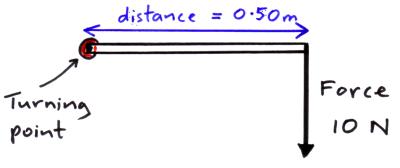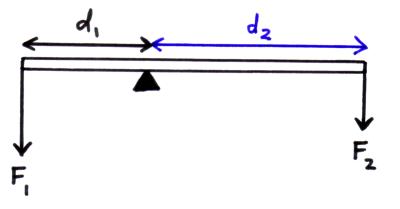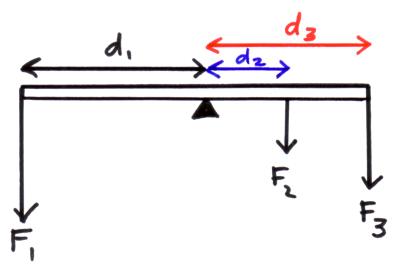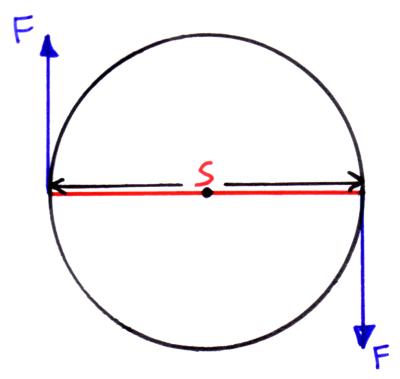The moment (or torque) of a force about a turning point is the force multiplied by the perpendicular distance to the force from the turning point.
Moments are measured in newton metres (Nm).
Moment = F d
- F = the force in newtons (N)
- d = perpendicular distance in metres (m)
Example; A 10N force acts at a perpendicular distance of 0.50m from the turning point. What is the moment of the force?

Moment = Fd
= 10 x 0.50
= 5.0 Nm
The principle of moments.
” When an object is in equilibrium the sum of the anticlockwise moments about a turning point must be equal to the sum of the clockwise moments.”
sum of anticlockwise moments = sum clockwise moments
Example;

sum of anticlockwise moments = sum clockwise moments
F1 x d1 = F2 x d2
OR

sum of anticlockwise moments = sum clockwise moments
F1 x d1 = (F2 x d2) + (F3 x d3)
Couples
A couple is two equal forces which act in opposite directs on an object but not through the same point so they produce a turning effect.
The moment (or torque) of a couple is calculated by multiplying the size of one of the force (F) by the perpendicular distance between the two forces (s).
E.g. a steering wheel in a car;

OR




